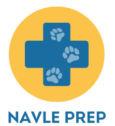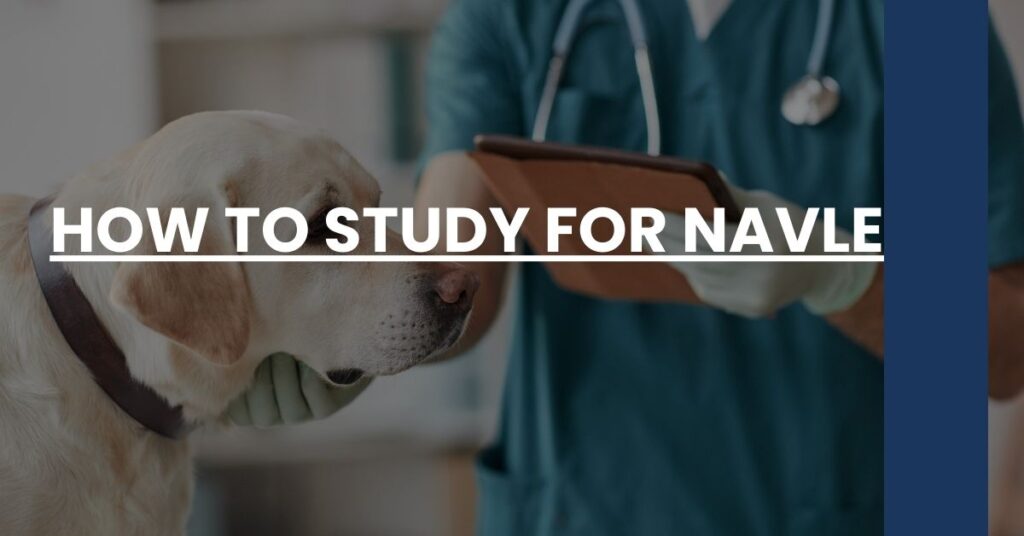How to study for NAVLE just got easier with our expert tips that streamline your preparation.
- Establish a Study Plan for NAVLE: Map out a structured schedule that incorporates all crucial topics.
- Select NAVLE Study Materials: Curate the best resources to enhance your learning journey.
- Practice with NAVLE Exams: Regularly test yourself to solidify your knowledge and identify weak spots.
Ace your exam with these strategies on how to study for NAVLE.
- Understanding the NAVLE Format and Structure
- Creating a Study Schedule
- Selecting the Right Study Materials
- Active Learning Techniques
- Utilizing Practice Exams Effectively
- Study Groups and Peer Learning
- Stress Management and Self-Care
- Assessing Your Progress and Adapting Your Plan
- Final Preparations and Test-Taking Strategies
- Conclusion: The Home Stretch to Passing the NAVLE
Understanding the NAVLE Format and Structure
Preparing to tackle the North American Veterinary Licensing Examination (NAVLE) is a monumental task that begins with a clear understanding of what you’re up against. Let’s demystify the exam structure to set the stage for your study success.
What is the NAVLE?
The NAVLE is a rigorous assessment that vets must clear to practice in North America. Administered by the International Council for Veterinary Assessment (ICVA), the NAVLE consists of 360 multiple-choice questions, testing your aptitude for entry-level veterinary practice.
Getting Familiar with the Exam Content
The exam includes various clinical scenarios, each with a series of associated questions. With a focus on four main species — dogs, cats, horses, and cows — the questions are crafted to evaluate your readiness for real-world veterinary challenges.
- Subject Breakdown: Get to know the specifics of the NAVLE by reviewing the Exam Content. Here’s what you’ll face:
Understanding the structure of the NAVLE is crucial for tailoring your study plan to meet specific exam requirements.
Creating a Study Schedule
When delving into how to study for NAVLE, think of your preparation as a marathon, not a sprint. Mapping out your study schedule is about creating a personalized plan that includes ample time for breaks and reinforces learning with review sessions.
Tailoring Your Study Plan
Create a balance that helps you maintain stamina and avoid burnout:
- Set Realistic Goals: Balance study sessions with your other commitments.
- Include Breaks: Regular pauses help keep your mind fresh and focused.
- Plan for Review: Reinforce your knowledge with periodic review sessions.
Maximizing Your Study Time
Implement these strategies to make the most of your study schedule:
- Uniform Study Sessions: Avoid long, erratic study periods; consistent, shorter sessions are more effective.
- Active Review Time: Incorporate methods like teaching back or discussing concepts to validate your comprehension.
- Adjust As Needed: Flexibility in your plan allows you to spend more time on challenging topics.
Crafting a well-thought-out schedule will ensure that you cover all necessary material without overwhelming yourself.
Selecting the Right Study Materials
Picking the best study resources can be just as daunting as the exam itself. The plethora of books and online resources available can lead to analysis paralysis. Breathe easy and let’s break it down.
Must-Have Resources
Arming yourself with the right tools is half the battle:
- Core Textbooks: Essential reads like the ‘Small Animal Veterinary Nerdbook’ provide a strong foundation.
- Review Tools: Engage with resources like online question banks to test your knowledge.
- Practice Exams: Mock tests help acclimate you to the NAVLE’s format and timing.
When selecting your study materials, think quality over quantity. You don’t want to overwhelm yourself with too much information. Instead, choose resources that offer a comprehensive overview and allow you to deep-dive into complex topics.
Active Learning Techniques
Active learning propels your retention levels and ensures that your study hours translate into performance. Let’s explore how you can become an active participant in your learning journey for the NAVLE.
Active Recall and Spaced Repetition
These methods are your best friends when it comes to studying efficiently:
- Active Recall: This technique involves testing your memory continuously, which reinforces learning far more than passive reading.
- Spaced Repetition: By revisiting information at increasing intervals, you embed knowledge deeper into your long-term memory.
Interactive Learning Methods
Apply the following hands-on strategies for an interactive study experience:
- Flashcards: An essential tool, flashcards make it easy to quiz yourself and are perfect for focused, quick review sessions.
- Case Simulations: These provide a real-life context to theoretical knowledge, which helps in understanding and retention.
- Peer Discussion: Explaining complex subjects to peers is a surefire way to reinforce your own understanding.
Incorporate these methods into your study routine to ensure that your hard work pays off. Embracing active learning will prepare your brain not just for the exam, but for the practical challenges that await in your veterinary career.
Utilizing Practice Exams Effectively
Simulating the test-taking experience with practice exams is a crucial step towards mastering how to study for NAVLE. But it’s not just about quantity; it’s the quality of your practice sessions that counts.
Frequency and Timing
- Begin Early: Start incorporating practice exams early in your study plan.
- Regular Intervals: Schedule them consistently to track progress and identify weak points.
Analyzing Your Performance
Reflect on each practice test with these strategies:
- Review Incorrect Answers: Understand why you missed questions to prevent future similar mistakes.
- Tackle Weak Areas: Use practice test results to focus your study sessions on subjects where you’re less confident.
- Simulate Real Conditions: Try full-length practice exams under exam-like conditions to build stamina and reduce anxiety.
Taking full advantage of practice versions of the NAVLE can significantly increase your chances of success. They allow you to familiarize yourself with the exam’s pacing and format, ensuring there are no surprises on the big day.
Study Groups and Peer Learning
Embarking on the journey of studying for the NAVLE can seem less daunting when shared with peers. Group study allows for diversified learning techniques and the advantage of pooled knowledge resources.
Benefits of Study Groups
Creating or joining a study group can be a highly effective strategy as it offers several benefits:
- Peer Support: Having the emotional and academic support of peers can boost your morale and help sustain motivation.
- Diverse Perspectives: Each member brings unique insights and understanding, enriching the collective learning experience.
- Accountability: Group settings naturally foster a sense of responsibility toward your peers, helping you stay committed to your study plan.
Setting Up Effective Study Sessions
Constructive group study requires planning. Here’s how to get the most out of your sessions:
- Choose the Right People: Look for peers who are serious about their preparation and can bring positive energy to the group.
- Set Clear Objectives: Establish what you want to achieve in each session to maintain focus.
- Regular Meetups: Consistency is key. Schedule regular sessions to maintain steady progress.
Potential Pitfalls and How to Avoid Them
Study groups can sometimes lead to diminished productivity if not managed well. Keep these tips in mind to avoid common traps:
- Maintain Structure: Set a clear agenda for each session to prevent veering off-topic.
- Equal Participation: Ensure all group members actively contribute to avoid dominance by any one person.
- Limit Group Size: A smaller group is often more effective, reducing the likelihood of distractions.
While study groups can offer substantial benefits, they are just one component of your broader NAVLE prep strategy. Balance your group study with individual review periods to cover all bases.
Stress Management and Self-Care
The stress of preparing for the NAVLE can be as challenging as the material itself. Maintaining a healthy lifestyle and implementing stress management techniques are paramount to keep your brain primed for absorbing and retaining information.
Stress-Reduction Techniques
Here are some holistic practices that can alleviate stress during your NAVLE study period:
- Mindfulness and Meditation: These practices can enhance focus and reduce anxiety, providing you with mental clarity.
- Regular Exercise: Keeping your body active improves mood and can help to combat stress-related fatigue.
- Adequate Sleep: Never underestimate the power of a good night’s sleep for cognitive function and memory consolidation.
Finding Balance
It’s essential to find harmony between studying and personal time:
- Scheduled Downtime: Intentionally plan leisure activities to give yourself a break from studying.
- Nutritious Diet: Fuel your brain with the right nutrients to support cognitive endurance.
Incorporate these stress-relieving habits into your daily routine to ensure you’re at your best on exam day. Remember, caring for yourself is caring for your future as a veterinarian.
Assessing Your Progress and Adapting Your Plan
Adaptability is key in your NAVLE preparation. Regular self-assessment allows you to recalibrate your study efforts effectively to ensure that you’re on the right track.
Measuring Your Study Progress
Frequent check-ins with yourself to assess progress and comprehension is crucial:
- Self-Assessment Tools: Utilize NAVLE prep software that offers self-assessment features to pinpoint strengths and weaknesses.
- Reflective Journaling: Keep a study journal where you can reflect on your daily progress and areas for improvement.
Adapting Your Study Plan
Stay nimble and adjust your methods as you go:
- Increase Focus on Weak Areas: Redirect more time to subjects where you score lower in practice tests.
- Embrace New Learning Methods: If certain topics aren’t sticking, try a different approach or resource to tackle the material.
Your ability to evaluate and adjust your study strategy is a dynamic skill that will serve you not just for the NAVLE, but also throughout your veterinary career. Embrace the cycle of assessment and adaptation for continual improvement.
Final Preparations and Test-Taking Strategies
The final stretch before the NAVLE calls for a boost in your exam readiness. Tapering your study efforts, revisiting high-yield topics, and honing your test-taking strategies can culminate in peak performance when you sit for the exam.
Tackling the Last Few Days
Countdown to test day with confidence:
- Review High-Yield Material: Concentrate on summaries and key points of major topics.
- Rest and Relax: Ensure you’re well-rested leading up to the exam day to avoid burnout.
- Experience-Based Learning: Leverage any last-minute hands-on experiences you have access to, as they can reinforce theoretical knowledge.
Exam-Day Strategies
Once you’re in the exam room, keep these strategies in mind:
- Time Management: Keep a steady pace to ensure you complete all sections of the NAVLE.
- Reading Questions Carefully: Misinterpreting a question can lead to easy mistakes; take your time to understand each question.
- Eliminating Incorrect Answers: Use your critical thinking skills to narrow down options and improve your chances of choosing the right answer.
Approaching the NAVLE with a clear, calm mindset and strategic approach can make all the difference. Trust in your preparation and remember that you’re about to cross the threshold into a profession you’re passionate about.
Conclusion: The Home Stretch to Passing the NAVLE
You’re not just studying for the NAVLE; you’re building the foundation for your future in veterinary medicine. The hours you invest, the strategies you employ, and the self-care you practice are paving the way to not just pass an exam, but to begin a rewarding career caring for animals.
Remember, how you study for NAVLE is as individual as you are. Tailor your approach with what resonates best with your learning style and lifestyle needs. And, when it gets tough, remember why you chose this path—your passion for animal health.
Stay dedicated, stay balanced, and with every flashcard you memorize, every practice question you nail, and every chapter you finish, you’re one step closer to achieving your veterinary dreams.
Learn how to study for NAVLE effectively with our expert guide on preparation strategies, study materials, and practice tests.

